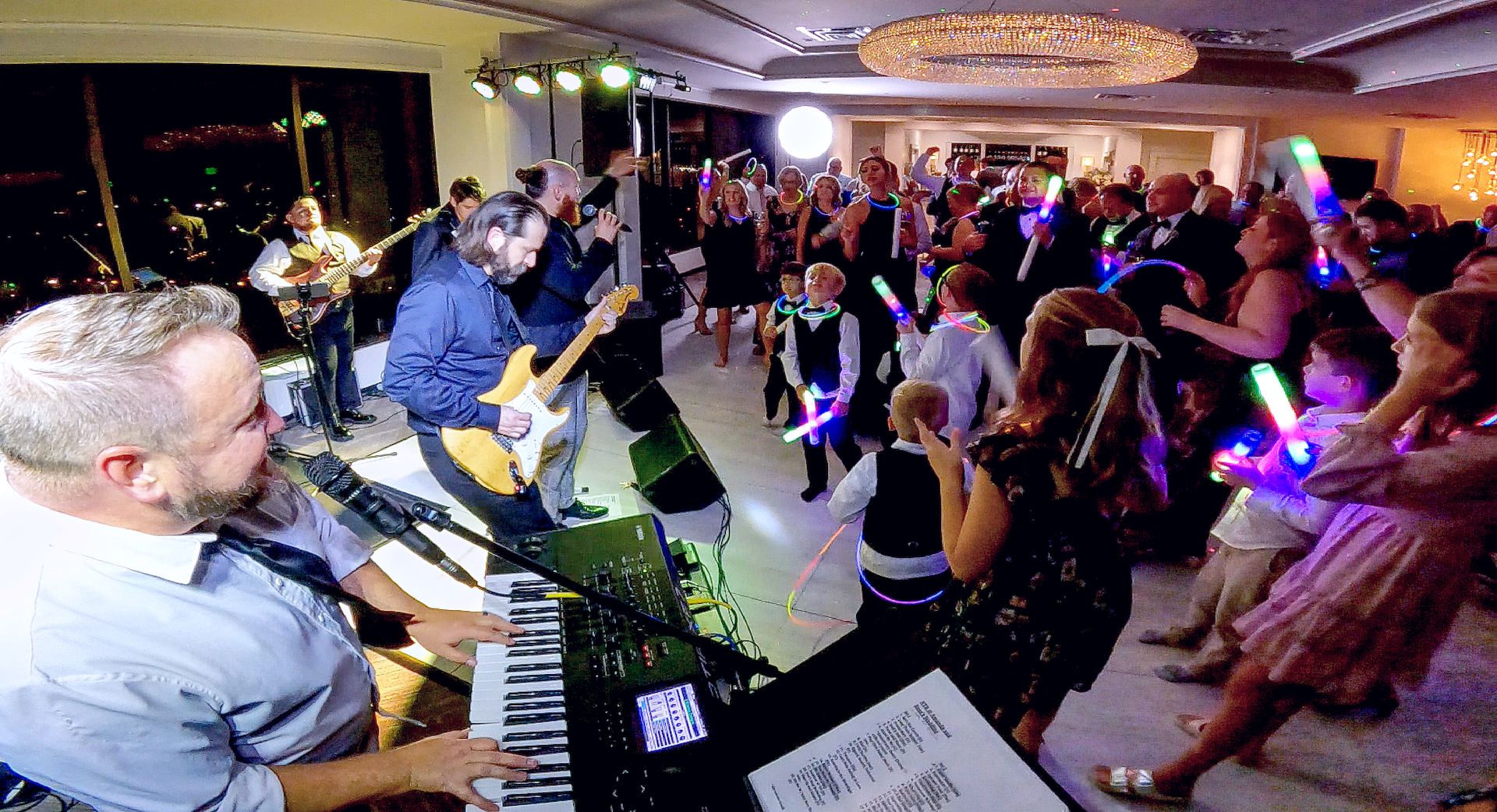👁 Visual Entertainment: What Your Audience Sees Matters

When we think of live music, it's easy to focus on what the audience hears—the melodies, harmonies, lyrics, and musicianship. But there's another important side to every great performance that often is forgotten by performers ... and immediately noticed by audiences:
The Visual Experience
Whether you're a solo act, part of a duo, or playing with a full band, your visual presence on stage can either elevate your show to unforgettable status—or make it fall flat, no matter how great your music sounds.
You are not just a musician. You are also a visual entertainer. Here’s how to think one...
Stage Design: Set the Scene
Think of your stage like a blank canvas. Even the simplest setup can be transformed with a bit of intentionality. Consider things like this:
- Banners, backdrops, or LED signage with your name or logo
- Instruments and gear arranged neatly or symmetrically
- Decorative elements or themed props that reflect your vibe or genre
Whether it’s a cozy corner in a coffee shop or a large event hall, small visual touches can help create a memorable aesthetic and make your performance space look like a show.
Lighting and Special Effects: Mood in Motion
Lighting can completely transform the mood of your performance:
- Soft, warm or cool lighting for emotional intimate moments
- Bright, colorful lights with lots of movement for dance numbers
- Spotlights for solos or dramatic moments
- Special lighting and effects like lasers, disco balls, fog machines to help create illusions on stage.
These days, there are even machines that create the appearance of fireworks or other pyrotechnics on stage without the chance of starting a fire.
If you're playing bigger venues or private events, explore simple effects like fog machines, light bars, or synced lighting transitions to bring extra energy without going overboard.
Costumes and Attire: Dress the Part
What you wear on stage speaks volumes before you even play a note. You don’t need to dress like a rockstar unless that’s your thing—but you do want your appearance to feel intentional.
- Aim for attire that fits your genre or show theme
- Coordinate outfits with your bandmates (even loosely)
- Avoid overly casual or distracting looks unless it’s part of the act
Your outfit is part of your brand—it sets a tone and builds expectation before the first chord hits.
Movement and Dance: Use the Space
Standing still can be a powerful choice… but only if it’s on purpose.
- Move with the rhythm, early and often, even if it's just subtle
- Step forward during solos or key moments
- Interact physically with your bandmates and the audience
You don’t have to choreograph every moment, but using a bit of movement and body language goes a long way in keeping your audience visually engaged.

Facial Expressions: Say It Without Saying It
Your face tells a story. Audiences love watching performers feel their own music.
A comment that I get all of the time is "You look like you're having so much fun on stage!"
The truth is that sometimes I am having fun, sometimes, I am not, but the audience needs to believe that I am having a great time (so they will too). Try these ideas...
- Smile, laugh, and show emotion while you play
- Make eye contact with the crowd when possible
- Avoid a “blank” or overly focused expression the whole time
You might be concentrating, but the audience is looking for emotional cues from you—so let them in!
On-Stage Interaction: Let Them See the Chemistry
If you’re performing with others, don’t just stand next to them—play with them.
- A quick glance or smile
- A shared laugh between verses
- A synchronized move or gesture during a musical moment
Audiences love seeing genuine connection. It shows you're enjoying yourself and that ... is contagious.
Audience Engagement: Break the Invisible Wall
I often see performers get stuck in “music performance mode,” where they only focus on playing or singing the music. But the most enjoyable entertainers find ways to bring their audience into the moment:
- Talk to them between songs
- Invite sing-alongs or call-and-response moments (both in the songs and when there is no music playing)
- React when they react (smile, laugh, nod, or say something)
- Use NAMES of real people in your audience
Even just acknowledging your crowd with a simple “Thanks for being here tonight!” makes a big difference.
Your Show is More Than a Setlist
Great music might get people to listen—but a great performance makes those people remember you. Visual elements are not just add-ons; they’re part of the full experience that keeps your audience talking long after the show ends.
So next time you hit the stage, don’t just ask yourself:
“How does this sound?”
Teach yourself to also ask:
“What does this look like?”
Because when you combine strong musicianship with intentional stage visuals, that’s when the magic happens.
If you want to build a show that looks as good as it sounds, I’ve got resources to help you. Whether you’re looking for one-on-one coaching or step-by-step training to improve your live performance, check out our courses and coaching options here. Let’s make your next show one to remember—for all the right reasons.
Thanks for reading!
Danny
Be the Performer You Are Meant to Be!
Join us to start performing with confidence, purpose, and fun... one email at a time.
When you signup, you will get regular email updates with free content and product offers.



